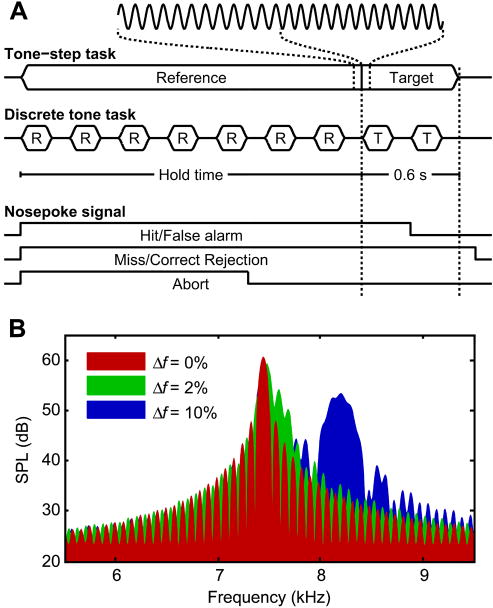Fig. 1.
(A) Schematic representation of the tone-step and discrete tone tasks with corresponding scoring for nosepoke withdrawal scenarios. The waveform cut-out at top shows an example of phase-matching at the reference-target transition of a +15% Δf tone-step stimulus. (B) Examples of acoustic spectra from three 12 ms tone-step signal snippets centered around the tone-step frequency transition for a 7.44 kHz reference with Δfs of 0% (catch trial), 2% (fTAR = 7.58 kHz), and 10% (fTAR = 8.20 kHz). Note that the ~6dB difference in peak height between the 0% and 10% transitions represents the expected 50% decrease in signal strength caused by halving the 7.44 kHz contribution to the snippet.

